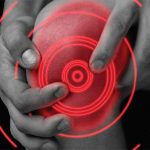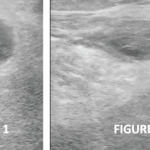“About 70% of breast cancer is estrogen receptor-positive, and AIs decrease estrogen levels by inhibiting the conversion of androgen precursors to estrogen, both in the peripheral and breast tumor tissue,” said Dr. Crespo-Bosque. “About 50% of these patients will get arthralgia, and many of them won’t complete their indicated course of treatment because of it.” Arthralgia may be related to estrogen deprivation in these women, because estrogen is though to have anti-nociceptive effects, she added.
For the Hormones and Physical Exercise (HOPE) study, the researchers randomized 121 postmenopausal women with a history of breast cancer who had been treated with AIs for at least six months and had arthralgia to either an aerobic exercise intervention or usual care. The exercise regimen included supervised resistance training twice weekly and 150 minutes of weekly aerobic exercise. The researchers measured pain severity and location using self-reporting, and assessed pain sensitization by measuring PPT at the knee and wrist with a handheld algometer.
Patients in the exercise group showed improvements in their pain severity, but no significant change in their PPT at the knee or wrist, so pain improvement must occur through mechanisms other than decreased sensitization, said Dr. Crespo-Bosque. Because AI-associated arthralgia may be due to sensitization, this patient population could provide insights into how pain develops and exercise’s positive effects on sensitization.
Susan Bernstein is a freelance journalist based in Atlanta.
References
- Singh JA, Nobel L, Weissman N, et al. Post-arthroplasty pain trajectories after total knee arthroplasty and their association with 6- and 12-month pain (abstract). Arthritis Rheumatol. 2016;68(suppl 10).
- Singh JA, Gabriel S, Lewallen D. The impact of gender, age, and preoperative pain severity on pain after TKA. Clin Orthop Relat Res. 2008 Nov;(466)11: 2717–2723.
- Liu J, Frey-Law L, Hawker G, et al. Relation of pain sensitization to the evolution from intermittent to chronic, persistent pain in knee osteoarthritis: The multicenter osteoarthritis study (abstract). Arthritis Rheumatol. 2016;68(suppl 10).
- Coghill RC, McHaffie JG and Yen YF. Neural correlates of interindividual differences in the subjective experience of pain. Proc Natl Acad Sci USA. 2003 Jul 8;100(14):8538–8542.
- Lee YC, Fine A, Protsenko E, et al. A pilot pulsed arterial spin labeling study of regional cerebral blood flow in response to pain in RA, before and after DMARD treatment (abstract). Arthritis Rheumatol. 2016;68(suppl 10).
- Centers for Disease Control and Prevention. Vital signs: Overdoses of prescription opioid pain relievers and other drugs among women: United States, 1999–2010. MMWR Morb Mortal Wkly Rep. 2013 Jul 5;62(26):537–542.
- Chung CP, Dupont W, Murray K, et al. Comparative safety of long-acting opioids for non-cancer pain. Arthritis Rheumatol. 2016;68(suppl 10).
- Crespo-Bosque M, Brown C, Cartmel B, et al. Pain and sensitization in women with aromatase inhibitor-associated arthralgias. Arthritis Rheumatol. 2016;68(suppl 10).



